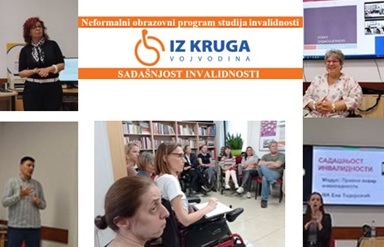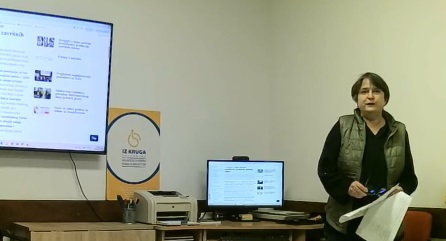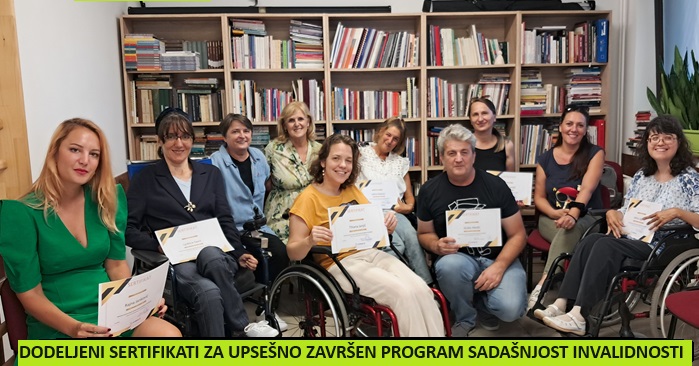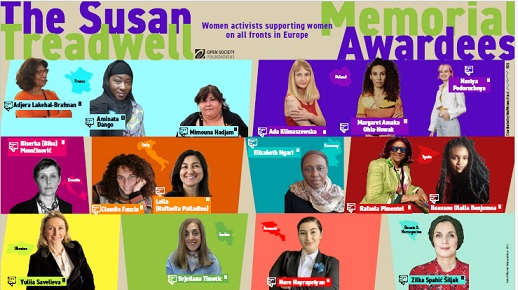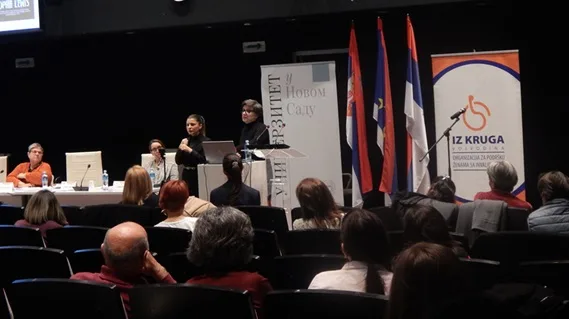We have heard it innumerable times (and again): – Yes, we have finally done away with all the problems of the disabled, let’s focus on sex now. GIBBERISH!!! Capital letters and several exclamation marks indicate that we are, no doubt, dealing with a composed and tolerant person. The terminology this person uses confirms it additionally: the disabled. The ones to deal away with. By denying sex to them. Before they even dare practice it. Moreover, before they even dare think about it! There’s not much else one can say except comply with it. You are absolutely right, for sex nothing to do with life. It has even less to do with one’s health, God forbid people’s freedom. It is a no-tackle matter. Especially in your thoughts. Practice, however, is something else. Now, suppose we introduce plural and reveal that there are sexual practices beyond the patriarchal heteronormative one, which are particularly interesting to persons with disabilities, we can expect an avalanche of frustrated and/or puritan exclamation marks: – The last thing we need are the perverted disabled! Where is this new, brave, deviant world heading to!?! (The continuation is most likely a tirade on family values under the threat of an apocalypse.) There’s not much else one can say except comply with it once again. You are absolutely right because perverted means turned upside-down, while deviant (from de + via) means out of the way. Let’s just establish why we should all regard the world (or anything else) with the same eyes and walk along a single way (supposing we have not been hypnotized by single-mindedness and deprived of a unique sexual profile)? In the 1920’s, oral sex used to be a legally sanctioned perversion. During the scandalous divorce proceedings of Charlie Chaplin, the great actor was being accused of practicing oral sex. In an attempt at self-defense, Chaplin said: – But all married people are doing it! His statement caused public repugnance. The divorce was imminent and justified. Would it be considered a perversion nowadays? With some people – most certainly. Others are crystal clear about the morals being nothing more than an issue of transient fashion. Puritans, you have been warned. No one is trying to turn your perception upside-down or to move you from your missionary position. It is absolutely fine to be fond of vanilla, but cancelling all other tastes because in favor of this one would not be right. For those interested to learn about BDSM and other sexual variations, intertwining between sexuality and social justice, kink and disability, pain and pleasure: Shanna Katz Kattari demystifies it all.
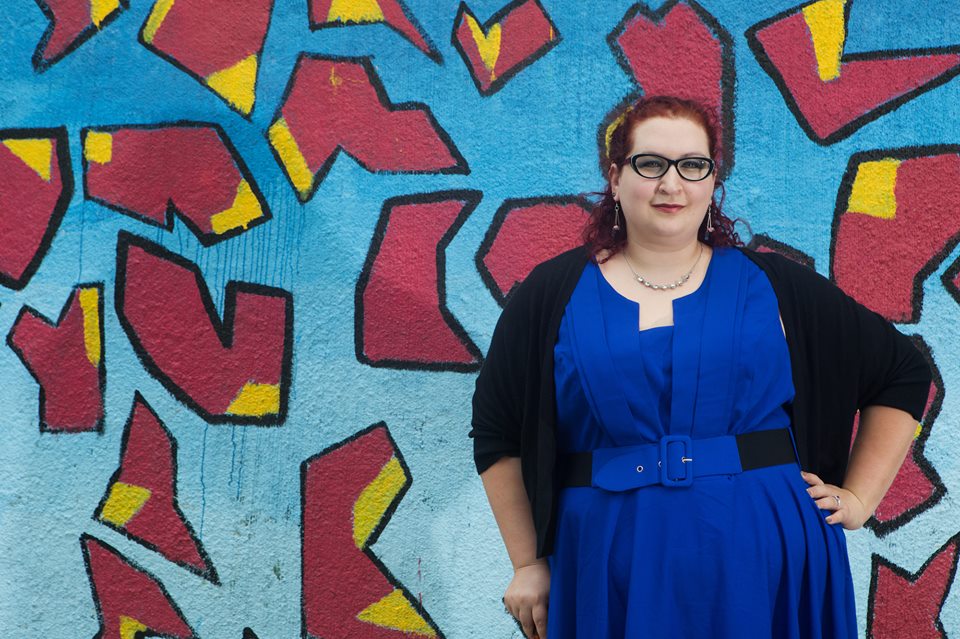 Can you tell us a little bit about yourself and your background?
Can you tell us a little bit about yourself and your background?
I am a certified sexuality educator, bord certified sexologist, and a faculty member at the University of Michigan. I started down this path in 2006, when I went to get a Master’s in Human Sexuality. After working in that field for several years, as well as working at a non-profit doing development and communication work, I realized that I wanted to bridge my dedication to social justice with my interest in sexuality, gender, and marginalized communities, and went to get my PhD in social work.
How did you manage to join the fields of sexuality and social justice in your work?
I have always been committed to doing advocacy and activism work, and over the past decade or more, I’ve realized how little discussion of sexuality, especially beyond the LGBTQIA2S+ community, there is in social justice work. When working as a sexuality educator, I tended to work with folks on the fringe of sex ed; older adults, disabled individuals, kinky folks, those pursuing non-monogamy, college students whose sexual scripts didn’t fit in with the mainstream idea of what it meant to be a sexual being. I realized that even though many people believed sexual health and sexual rights were deserved by all, these rights often weren’t extended to those weren’t interested in cisgender, heterosexual, vanilla (non-kinky), monogamous sexual interactions with more stereotypically attractive individuals. I wanted to work towards changing that.
What’s your personal definition of BDSM (for dummies)?
Many people believe in the BD = bondage and discipline, DS = domination and submission, and S/M = sado/masochism, which is a great jumping in point. However, I think BDSM, or kink (as I prefer to use – it is a better umbrella term) is anything where one is interested in sexual behavior outside of what we have been told is acceptable. For many people, yes, this involves power play/power exchange, or some sort of pain (like spanking, flogging, etc.), or bondage, or role play. But for others, this might be something as seemingly innocuous as having sex with the lights on, or watching porn together – if it FEELS taboo or kinky, than it IS kinky, if folks want to own that word.
Why do you think people are drawn to BDSM and other sexual variations (fetishes, kinks)?
Sometimes I worry that we spend so much time trying to figure out the „why“ of sexuality and gender. We want to know how someone is trans, or queer, or _____. I don’t really think that is important. I think what is important is the „why“ of society telling people that who they are and what they desire (within consenting human adults) is not acceptable or appropriate.
 How do you see the intersection of BDSM and disability?
How do you see the intersection of BDSM and disability?
There are so many intersections here. One of the things I like best about BDSM and kink is the huge focus on communication; partners are expected, in advance of any interaction, to discuss (online or in person) what they are into, what they like/don’t like, what their limitations or challenges (physically, emotionally, medically, etc.) might be, and figuring out words or actions that ask for the interaction to halt. Can you imagine if we encouraged everyone to do that around sex? I try to encourage folks to do this all the time, but especially my young, cisgender, heterosexual learners look at me as if I had five heads – we simply don’t encourage open communication about desire and sex. Now shift this to disability; many disabled folks are taught their whole lives (both explicitly from people around them, and implicitly through media and other modalities) that they shouldn’t want sex, they can’t have sex, that no one will desire them, that their bodies and minds are not set up for this. And then, we have this world where not only is it allowed, but actually expected for them to detail their desires, and to name what their needs are, including their bodily needs. How amazing is that? I did a study a few years ago, now published in Sexuality & Culture, on disabled adults and negotiations with their sexual partners. One participant, a stroke survivor, was kinky herself, and I remember her saying that she would ONLY have kinky partners from now on, because they were the ones that were most responsive to all of her needs, and who she trusted the most to ensure her disability needs were met along with her desire related needs. That has really stuck with me. I think also, when one’s body/mind does not do what you would like them to do, or when you have chronic pain that is uncontrollable, the ability to take control of yourself or others as part of BDSM play, or to make the choice around giving or receiving pain (I often hear this differentiated as „good pain“ when compared to illness/disability related pain, which is labeled „bad pain“), seems absolutely wonderful and really affirming for many people. I have also seen a lot of disabled people play with receiving service (within a kink framework) as a way to negotiate access intimacy, or to feel more comfortable about asking for and having their needs met in a different framework. Really, the possibilities are endless.
Tell us something about your classes on BDSM and disability (work methods, topics, experiences)…
It’s interesting – these classes don’t fill up the way some of my other classes and workshop do, but I have noticed that the people who are there REALLY want to be there. They line up in advance, they tell me that my workshop is one of the main reasons they chose this conference, or that they drove up from another city. There is so little conversation about this interaction of kinky and disability, and people are just thirsty to get information, and even more so, to feel they are not alone. These classes and workshops often run more like support groups, where people talk to one another about things they have tried, or hacks they have made on certain toys to be more accessible. One year at a workshop connected to a kink conference, our small class took a „field trip“ to the vendors area, and talked about which implements and toys had really worked well for people, and gave our feedback to vendors about how to create or adapt their wares better for this community. Often, the focus is on physical disability, but sometimes we talk more about mental health, about consent, about harm reduction, about if someone is into non-suicidal self harm and is using kink as a venue for it, how to manage that (it involves a lot around consent of all parties involved), etc. It really is a customized class based on who is in the room.
 What are some of the biggest misconceptions about women with disabilities involved in BDSM?
What are some of the biggest misconceptions about women with disabilities involved in BDSM?
Number 1: That disabled people cannot consent. Number 2: That disabled people are asexual or don’t have sex drives. SOME are asexual. SOME have low to no sex drives, but that is no way indicative of the community as a whole. Number 3: That being attracted to a disabled person makes you have a disability fetish. Now, if you are ONL Y attracted to certain types of disabilities/impairments, or types of bodies, then perhaps, and that is another conversation. Number 4: That all disabled people who are kinky are submissive and want to have things done -to- them. Number 5: That it is hard or impossible to be kinky with someone who has physical disabilities, because you will hurt them/that disabled people are all fragile or breakable.
How can kink be used as a tool for managing disability?
I touched on this above, but I am also reminded of people who have come to my classes who use sub drop/sub space as a way to manage their „bad pain“ because they would rather be loopy from endorphins sometimes than from pain medication all the time. I also remember are couple where the girl (adult, obviously) was a self-identified cutter, and her Mistress made a rule that she would not cut on her own; if and when she felt the need to cut, the girl was to come to her Mistress, and the Mistress would offer some sort of pain that was less long lasting, and lower risk. Eventually, the two designed a beautiful cutting (where you cut the same area over and over again to cause intentional scaring, similar to a non-inked tattoo) that spelled out BEAUTIFUL in the Mistress’s handwriting, and whenever the girl felt the urge to cut, she would got to her Mistress and they would work on this cutting together. Often, when I tell this story to counselors and therapists, people get a little squicked out, but I see consent, I see negotiation, I see harm reduction, I see coping skills, and I see a beautiful relationship where two humans have figured out a way to engage in a trusting and loving interaction.
When BDSM translate into relationships outside the bedroom, how does it actually work?
Depends – for many people, it doesn’t happen outside the bedroom (or at least outside of the home in general). For others, it translates well, and for yet others, they give it a go, and realize the fantasy of a 24-7 relationship is much better served as just that, a fantasy. It involves having clear expectations, ongoing communication, a shared vision – much like anything else involving two or more individuals.
 How do you respond to people who say that women who engage in BDSM are acting out some sort of abuse cycle?
How do you respond to people who say that women who engage in BDSM are acting out some sort of abuse cycle?
Oy. Abuse is a abuse. Kink is kink. Abuse CAN happen in kinky relationships, just like it can happen in vanilla relationships, but BDSM/kink on its own is NOT abuse. In fact, the emphasis on communication, on being risk aware, on consent (and ideally ongoing consent), makes kinky relationships, if anything, LESS likely to be acting out cycles. If we’re going to take it that direction, you know what seems abusive to me; expecting one partner to take care of the house and the children, to always be receptive for penetrative sex, and to care little (if at all) about that partner’s sexual desires, needs, and whether they are experiencing pleasure. And yet, this has historically been how women have been treated in mainstream, heterosexual relationships for centuries if not longer. Do we label that abuse? Assuming that everyone is an adult, is consenting, is human, and knows what is going on, I am not sure who I am, or who anyone else is, to place a label of abuse across a large group. Now, I do acknowledge there can be and is abuse in this community too. I train social workers, counselors, therapists, and medical providers on how to look out for this, and how to support someone who IS in an abusive kinky relationship. However, if we make the assumption that all kink is abuse, this stigma only drives this community further underground, and makes it much for difficult for those who ARE experiencing abuse to get help and support.
Safety tips for people with disabilities who would like to experience BDSM for the first time?
Know who you are playing with – it can be easy to get caught up in the thrill of meeting new folks (either online or in person) and feeling seen and desired. Make sure you know who you are interacting with, and if you don’t know them personally, it is ok to put a pause on it, ask around, request more information from them, etc. Be clear in your experience – it absolutely fine to say you are just trying something out and are new to this, but it can cause issues if you pretend like you are an old hat at something you have never done before. Considering reading erotica or watching kinky porn to get an idea of what turns you on – obviously, the real world is different than fantasy, but you might get all sorts of fun ideas. Start slow and work your way up – always better to leave them (or you!) wanting more than to try too much too fast and not enjoy it or get hurt. Find a kink friendly provider who can answer some of your medical questions (like „can I do electro play if I have a pacemaker“ or „is it safe for me to hold my breath, or will it cause seizures?“). Consider working with a local Pro Domme or other sex educator, either individually or with you partner(s) to learn how to do things in a safer way. Check out KinkAcademy.com for videos on allllll sorts of activities you can learn how to do in the safety and comfort of your own home. Always be clear about all of your boundaries, but especially be clear about disability related needs/boundaries, and even more so if you are playing with someone you do not know.
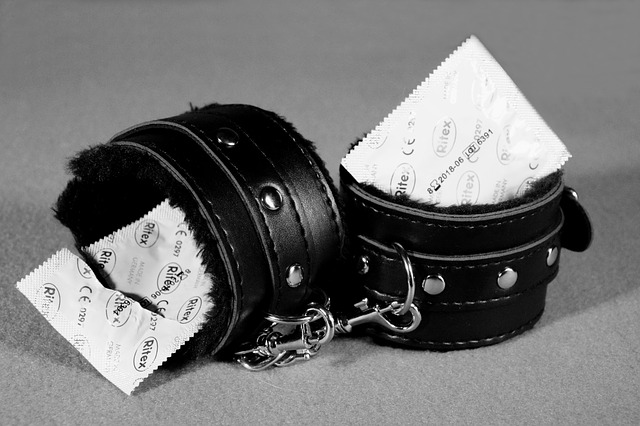 Your understanding of devoteeism? Are disability fetishists exploiting people with disabilities?
Your understanding of devoteeism? Are disability fetishists exploiting people with disabilities?
Are there devotees? Yes. Fetishists around disability? Yes. The bigger issues is around awareness and consent. In the same way that some women love to find and partner with men who are FemDomme devotees (ie, women are the better gender and should rule the world), some disabled folks enjoy that interaction with devotees, while others are not into that at all. Decide what your feelings are on this and make that clear to current and potential partners. If you do not like this aspect, and a potential partner seems to focus on your impairments, send them on their way. If you like it, manage expectations around what you do and do not like, what language you like used, etc. There was a professional switch who was Deaf, and spoke about when she topped people, she would joke with them to „cry all you want – it’s not like I can hear you“ (they had other safe word like actions negotiated), and when she bottomed to someone, she would turn off her cochlear implants, and she felt completely free and like she was flying. In the former situation, she enjoyed playing with devotee types, because she could make being Deaf a part of their scenes and their play, and it felt powerful. That said, it isn’t for everyone, so each person will need to make their own choices.
What every woman with disability can do for herself to improve sexual health?
Know your body, and what you like and don’t like (including what hurts, or what triggers other things – it doesn’t want to do them, but it is good to know and be prepared). See your provider regularly for good sexual care, STI testing, PrEP if you plan to have multiple partners or not use barriers, etc. Read books, blogs, etc., or watch movies, youtube, KinkAcademy shorts, etc., to figure out what interests you. Do self checks on your breasts or have someone help you (which can be fun!). Know that there is not one way to be sexual or sexy; figure out what feels good for you, and then pursue it.
The introductory part translated by Ankica Dragin

